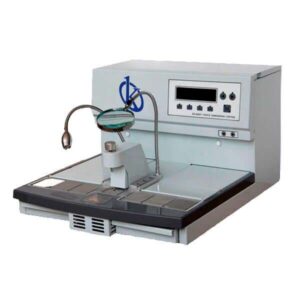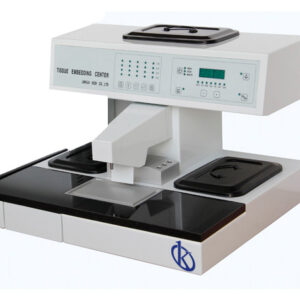Description
The Biological Tissue Freeze Embedding Machine YR448 is an advanced solution for histological and pathological laboratories, designed to streamline tissue processing. Featuring an imported OLED module display, data is easily viewable from any angle, which, along with an intuitive interface, makes for seamless operation. Fully automated computer control enables scheduling for greater efficiency, while a specialized heating element ensures rapid, uniform heating. The device also includes double overheating protection for safety, as well as memory functions to retain preset temperatures post-operation. Its sleek, innovative design allows a flexible combination of the embedding machine and freezer, catering to diverse laboratory needs.
Market Price
The market price of this high-quality Biological Tissue Freeze Embedding Machine YR448 ranges between $7,000 and $7,900 USD, indicative of the advanced technology and precise capabilities it offers. This price point signifies an investment towards consistent, high-quality laboratory results, making it a prudent choice for laboratories prioritizing efficiency and reliability.
Frequently Asked Questions
- What is the temperature range of the cryogenic module?
The temperature range of the cryogenic module is from 0 to -20°C.
- Is the YR448 easy to operate and maintain?
Yes, its intuitive design and OLED screen make both operation and maintenance straightforward.
Advantages and Disadvantages
Advantages:
- Fully automatic computer control.
- Rapid and uniform heating with energy savings.
- Double overheating protection for enhanced safety.
- Automatic memory and recovery functions.
- Intuitive interface with OLED screen.
Disadvantages:
- It may require a significant initial investment.
- Its size and weight can be challenging for laboratories with limited space.
Product Use in the Field
This system excels in practical applications, enhancing efficiency and precision in histology and pathology labs. Its spacious workbench includes a wax block repair device for multifunctional use. The low-voltage cold light source and adjustable magnifying glass assist in the careful observation of small samples, while the cooling station, equipped with an eco-friendly refrigerant and imported compressor, ensures superior cooling performance.
Recommendations
To maximize the performance and lifespan of the YR448, adherence to manufacturer-recommended maintenance and calibration is crucial. Proper training on the system’s functionalities ensures consistent results and optimizes workflow. Enhance your laboratory’s operations today—request a personalized quote or generate one automatically through Kalstein Plus, and step into the future of tissue processing efficiency.
Features
- Advanced OLED display for clear data visibility.
- Fully automated system with flexible scheduling.
- Double overheating protection mechanism.
- Automatic memory and recovery features.
- Innovative split design for versatility.
Technical Specifications
| Model | YR448 |
| Cryo module temperature ranges | 0 to -20 C |
| Cryo module temperature setting | The optimal working temperature is about -10 C, and the temperature is under delay protection |
| Cryo module dimensions | 315×380 mm. |
| Working voltage | CA 220V +/- 10% 50Hz (Standard Model); AC110V +/- 10% 60Hz |
| Power | 300W |
| Dimensions | 710x350x390mm (WxDxH) |
| Net Weight | 25kg |






